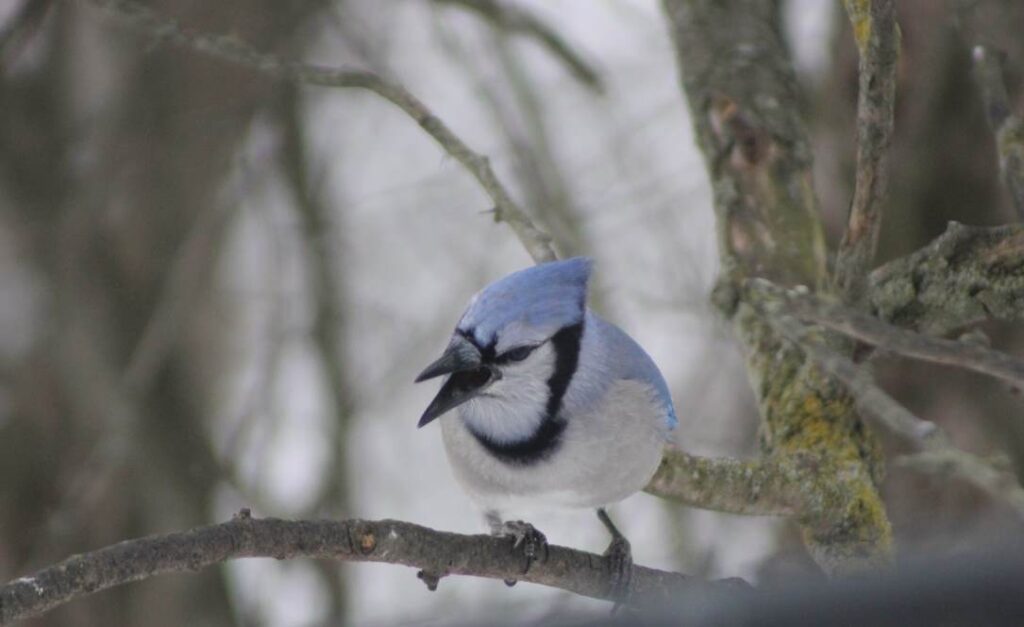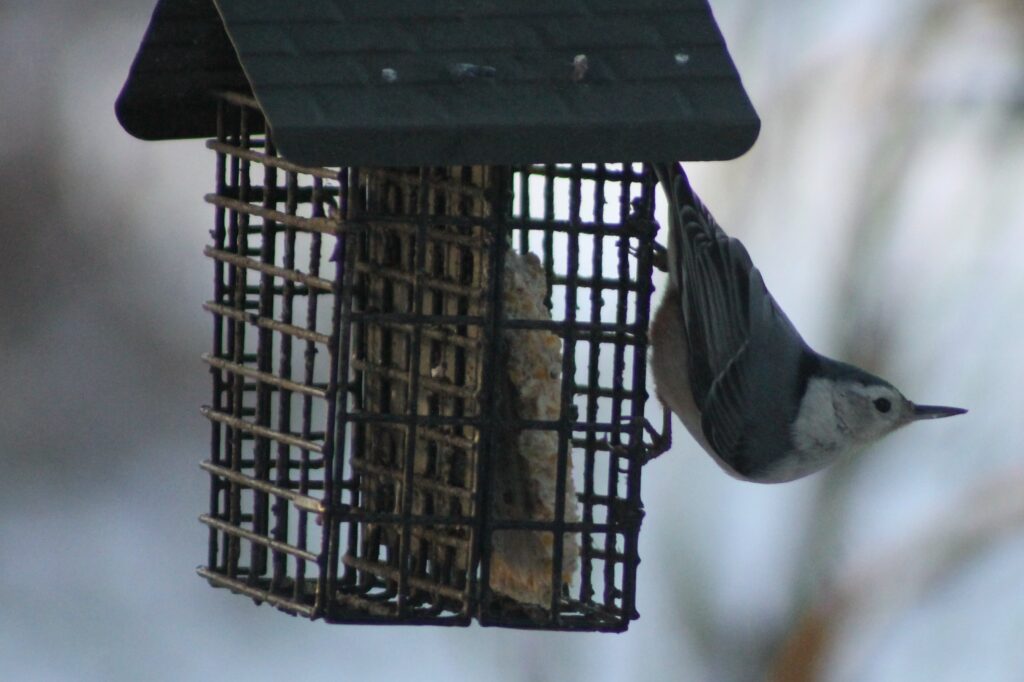One might say Allegany County has an embarrassment of riches when it comes to public outdoor spaces. We have miles of rail trails, public fishing rights along the Genesee River and numerous streams, lakes like Rushford Lake and Alma Pond, and, the icing on the cake – more than 55,000 acres of public land in the form of wildlife management areas and state forests.
In the coming months and years of this column I will provide you the lowdown on
each of those state forests, from Allen Lake to Turnpike.
The first of these explorations will discuss the one that holds a very dear
place in my heart – Vandermark State Forest.
My origin story
Everyone has an origin story.
In the comics, Superman came to be after an infant was rocketed to Earth from a
dying planet and the Hulk came from a scientist being hit with a mighty dose of
gamma radiation.
When it comes to this columnist, many readers might wonder why a guy from
Niagara County loves Allegany County so much.
It all started at Vandermark State Forest.
When I was growing up, the family farm and the factory that my dad and
grandfather started a year before my birth both needed attention and time, so
we didn’t go away on big trips. Our vacations were weekends in the state lands
near Alfred.
We ended up there because my dad is an alumnus of Alfred University. He loved the territory near the campus for what it offered with turkey hunting, trout fishing, and camping. Vandermark, with its rustic campsites, became our home away from home most often. With a truck camper or tents, this is where we spent those mini-vacations.
As I look back at my childhood and teen years, those weekends at Vandermark were far more valuable and memorable to me than any getaway to a destination like an ocean beach or Disney could have been. I enjoyed the trips to Allegany County immensely -- the time spent with family which became tradition, and the ability to explore seemingly endless tracts of forest and streams. I grew up on farmland -- open space and small woodlots – that created my love for nature. The massive forests of Allegany County exposed me to a whole new world of plants and animals that I didn’t have back home, magnifying my hunger to understand and connect to the natural world around us. I am who I am, I see the natural world the way I do, because of Vandermark, because of Allegany County.
But, enough of this reflection, let’s get to what you’re actually reading this
column for!
Where Vandermark is located
Vandermark State Forest is located in the town of Ward, just minutes from the village of Alfred. To get there from Alfred, take State Road 244 west out of the village, then turn left at the blinking light at 244’s intersection with County Route10 (Vandermark Road)/McHenry Valley Road. Not far from that turn you will encounter DEC signage mentioning the forest.
Allegany County Route 10 passes through the forest and the roads that cut
through it are Duke, Brody Slide, and Baker. There are 2 other roads in the
woodlands that are designated as forest roads – the DEC will close the access
gates to vehicular traffic in inclement weather and bad road conditions. Those
roads, which you will see on the map, are Allen and Bird. There is another
forest road, Gas Well, that is totally closed to car and truck traffic but is
open in winter as part of Allegany County’s vast snowmobile trail system.
You can park roadside at almost any location in the state forest. There is a small gravel parking lot (without signage) roadside on Route 10 and you can also park at any of the designated campsites shown on the map.
The history of the forest
Vandermark State Forest comprises 2,384 and is one of the best local examples of the impact of the Civilian Conservation Corps.
FDR’s program to employ young men and change the environment found a perfect worksite here. Heading into the Great Depression, the Vandermark forest did not exist -- it was vast open space, made so by forestry and/or farming. Dozens of young men toiled on this land, putting in the roads and planting many acres of pines and spruces to complement the deciduous trees that would come naturally.
Those vast coniferous stands planted by the CCC are nearly gone as we come up on 90 years since their planting. As part of the state’s forestry management strategies, the DEC has had many of those trees removed, both for revenue and to restore the forest to a more natural state since those pines and spruces weren’t native to the area. Over the past decade, a prime stand along Route 10 was removed, as was one on Baker Road very near Route 10. The latter’s aftermath can be seen in this picture with my wife – it looks like a logging photo you’d expect to see from the 1800s.
While I fully understand the DEC’s reasoning behind the removal of the conifers, it doesn’t make it easier on my heart or the wildlife. It’s the forest I grew up with and now it looks so different. And, as a young birder, I accumulated so many warblers and other birds on my life list that nested here and didn’t elsewhere in WNY where pines and spruces are fewer.
Many of the CCC trees remain standing on Duke Road, which as you will see in the accompanying photo make that road such an attractive gateway to Vandermark. It’s a stunning sight. If any DEC forestry people are reading this column I hope you will leave these trees standing. They are a connection to American history that carries aesthetic and natural value to this day.
Hiking and wildlife watching
Despite all the acreage, there are limited hiking trails in Vandermark. If you plan to go into the woods, you will have to navigate them bushwhacking style – just memory, a compass, or a good sense of direction. That is a great way to experience the natural world, because you see it at its rawest and by traveling places that humans rarely tread you’ll see more wildflowers, birds, and other creatures.
If you need trails, hike the roads (just not Route 10, which is a busy road…at
least by country standards). Duke Road and any of the true forest roads are
absolutely awesome hiking trails. You can rack up the miles and see all sorts
of wildlife. Vehicles are rare sights on those roads, so you need not worry
about any motorists disturbing the tranquility.
Even with the loss of the pines and spruces, the birdwatching at Vandermark is top-notch. It may be one of the best woods in Allegany County for watching migrating and nesting warblers in the spring. The woods are alive with these butterflies of the bird world. Also, wood thrushes can be heard in good numbers throughout. This sound is vanishing across the state, across the country, which many blame on the loss on wintering grounds in Central and South America, but Vandermark remains a stronghold for them in the spring and summer.
Exploring the streams
Vandermark Creek is the major waterway in the forest. Besides it, various small feeder streams, some permanent, some intermittent, flow through Vandermark State Forest. One of those can be found next to the campsites on Duke Road and another is located right behind the campsite at the start of the Allen Forest Road.
I mention this because they are great places to take kids. Think back to your youth – your parents could place you next to a stream and you could spend hours searching for fossils, salamanders, fish, and insects. The same can happen with your kids and grandkids in the rocky streams of Vandermark. Never overlook the simple things in life. It’s relaxing for kids and adults alike.
A word of advice – never take a salamander home with you. One of the streams here is home to the red salamander, an incredibly rare amphibian in WNY. When I helped the state with the NY Herp Atlas Project in the 1990s I found some here, as I did in the 1980s. Only one other location in all of WNY shows in that atlas! Don’t harm that fragile population.
Fishing Vandermark Creek
You might see anglers fishing Vandermark Creek, albeit rarely, as it passes through the forest. This is miles away from where brown trout have been stocked in this creek. This stretch is devoid of them but the cold, clear water here is home to native brook trout. If you fish for them here, put everyone back. This population is sustained by breeding, not by stocking, and over the 2000s the numbers have declined dramatically because beavers have altered the fishes’ movements to breeding sites while warming the waters to uncomfortable levels when ponds are made. I would consider this specific population of brook trout as being in trouble.
Camping at Vandermark
Looking at the map, various campsites can be found throughout the state forest. All of them can be considered rustic – really basic with just a campfire ring. Everything you bring in you should bring out. All of the sites can accept a car, truck camper, tent or small pop-up trailer. Don’t plan on taking an RV or camper trailer to any of them except the parking spot alongside Route 10.
I wouldn’t consider the water potable in any of the streams due to the presence of beavers and nearby farmland, so bring your own.
There are two camping sites on Duke Road, right across from each other. These are where we camped when I was young. It’s a very quiet location where you can be serenaded by barred owls and screech owls, and the 3 acres of open space next to them afford great strargazing at night.
If you are coming from out of the county for a weekend and want access to retail and a place to grab a meal, Alfred, just minutes away, has a Dollar General, hardware store, and a few eateries like the Collegiate Restaurant and the Terra Cotta Coffee House.
Make your own memories at
Vandermark
During my freshman year of college, my parents bought our forest in Alma, permanently attaching us to the County. So, I haven’t camped at Vandermark in 31 years.
But, that doesn’t mean it has stopped me from being there. Quite often we drive our kids out there to play in the streams and hike the trails. When there, I see my young self in my children, I see my parents in my current self. I am forever thankful for my parents taking me there. I hope adventures in Vandermark are having the same impact on my kids that it had on me.
I encourage you to do the same. Get away from the computer screens. Get away
from the hustle and bustle of life. Spend some time exploring Vandermark State
Forest. It’s good for the soul. I know...it was and is for mine.
From the 23 January 2024 Wellsville Sun






